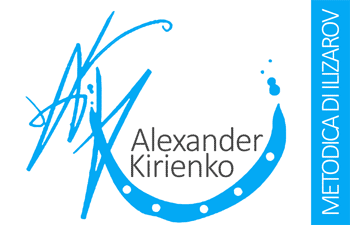History of Gavril Ilizarov
Gavril Ilizarov was born on June 15, 1921 in the small town of Belovezh in Belarus. A native of the Caucasus, Ilizarov grew up alone in this small village on the border between Poland and Belarus, whilst his family returned to Dagestan.
The childhood of one who was eventually to become a doctor of reference not just in Russia but throughout the West, was characterised by very difficult living conditions. In his early years Gavril Elizarov (his last name was changed due to a spelling error by an official in the register of births) already demonstrated a great propensity towards learning, so much so in fact that he completed his infant school studies in one year and his senior school studies in eight.


His study path was influenced by an encounter, some years earlier, with a local assistant physician. This assistant not only saved his life but also led him to choose the medical course for workers in Dagestan, and later the Medical University in Crimea.
With the outbreak of World War II, Ilizarov was forced to flee to Kazakhstan, where he completed his medical studies. In 1944 the young doctor was sent to the Russian region of Kurganskaya, beyond the Ural mountain range, to work as a handyman at a local hospital.
After the war, Ilizarov became head of the surgical department and – also given also the large number of mutilated soldiers or those with broken limbs – he gradually became drawn to the world of orthopaedics, which was eventually to become his greatest passion.
During this period Ilizarov came to the conclusion that the very long treatment times for long bone fractures and the various complications did not just depend on the nature of the fracture but also on the treatment administered and the technique used for the fixation of bone fragments.
In 1951 G.A. Ilizarov put forward his original method for uniting bone fragments, using a device invented in 1950. The innovativeness of his apparatus was confirmed by patent N° 98471, dated 09/06/1952.
Despite some concerns raised by influential physicians of the time, Ilizarov immediately began to demonstrate how the technique developed by him allowed: i) fractured bones to be elongated by up to 12 cm or more; ii) patients to walk on the third day following surgery (without the invasive procedures that were used at that time) and iii) the operated limb to have perfect stability.
His fame grew steadily until, in 1969, the Russian Ministry of Health did not offer him the post as head of the new Research Institute of Traumatology in Kurgan, a subsidiary of the more famous Vreden Institute in Leningrad.


In 1970 the same ministry decided to organise a conference dedicated specifically to the method of transosseous osteosynthesis, to honour Dr. Ilizarov for having made Russia a world leader in the field of orthopaedics. To thank him the Russian officials allowed him to set up the Institute of Experimental and Clinical Orthopaedics and Traumatology in Kurgan, so that he could continue his research in a fruitful way.
State of the art equipment and instrumentation allowed Ilizarov to put forward a series of original experiments to approve the role of blood flow and the stability of bone fragments in regeneration. The studies were conducted at an organic, cellular and molecular level. At the same time as the possibility of growth of the regenerated bone in a longitudinal direction, the same effectiveness was also demonstrated in a transverse direction.
In this way the experiments demonstrated that not only the long bones, but also the spongiosa and flat bones grow subjected to distraction.
In June 1982 Ilizarov managed, for the first time, to present his research abroad and he was invited, by Italian orthopaedic specialists, to deliver a presentation in Lecco. Contrary to common practice, instead of the usual 10 to 15 minutes, as demanded by international conferences, it took Ilizarov 2 hours to deliver each of his four presentations.
For the entire duration of the conference, the whole audience listened attentively, watching his clinical presentations with bated breath and repeatedly interrupting him with rounds of applause.
The decision was immediately taken to set up an Association for the Study and Application of the new orthopaedic technique. Ilizarov was ready to bring his technique to Europe.
Meanwhile, in institutions, research continued to focus on the issue of soft tissues during experimental elongation, especially with the aid of the electron microscope. What was also demonstrated was the stimulating effect of distraction stress on the cytostome and intercellular contact via the cellular skeleton, on the cell’s energy and biosynthetic system and on its growth, similar to that which occurs in ontogenesis.

The effect of distraction stimulation (tension stress) on the regeneration was officially recorded at the Committee on Inventions and Discoveries under number 335, on September 15, 1988.
Professor G.A. Ilizarov’s herculean endeavours were recognised in a number of prestigious international awards and medals such as:
• Doctor Emeritus of the Russian Federation;
• Winner of the Lenin Prize;
• Hero of Socialist Labour, with gold star;
• Medal of the Red Flag;
• Lenin Star.
He was also elected as a member of the USSR Academy of Sciences and of many orthopaedic associations in other countries such as France, Italy, Mexico, Yugoslavia and Czechoslovakia.
Gavriil Abramovich Ilizarov, the creator of one of the most used and pioneering techniques, died in Kurgan on July 24, 1992.
